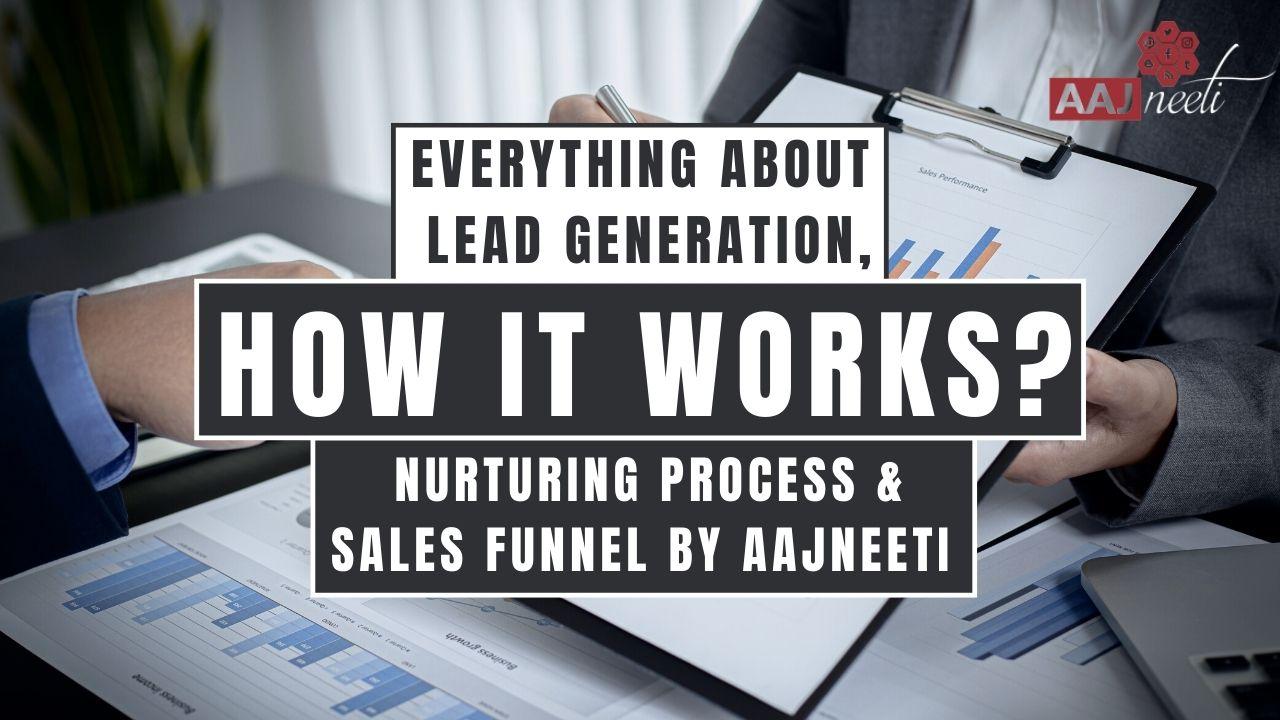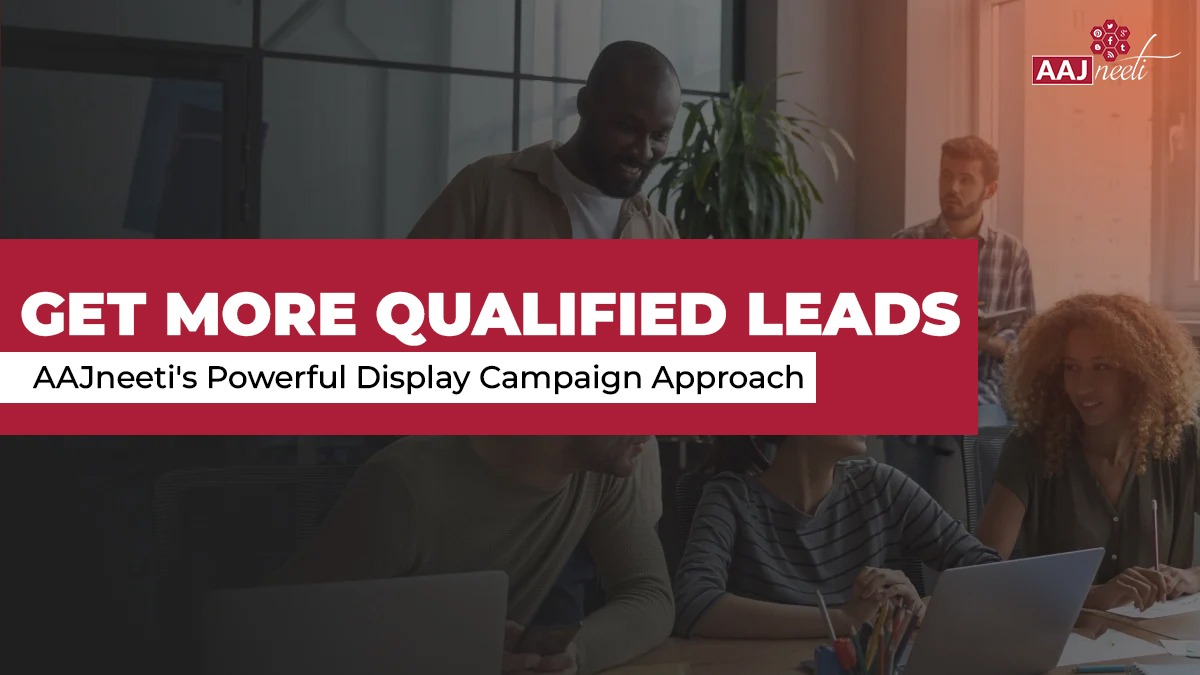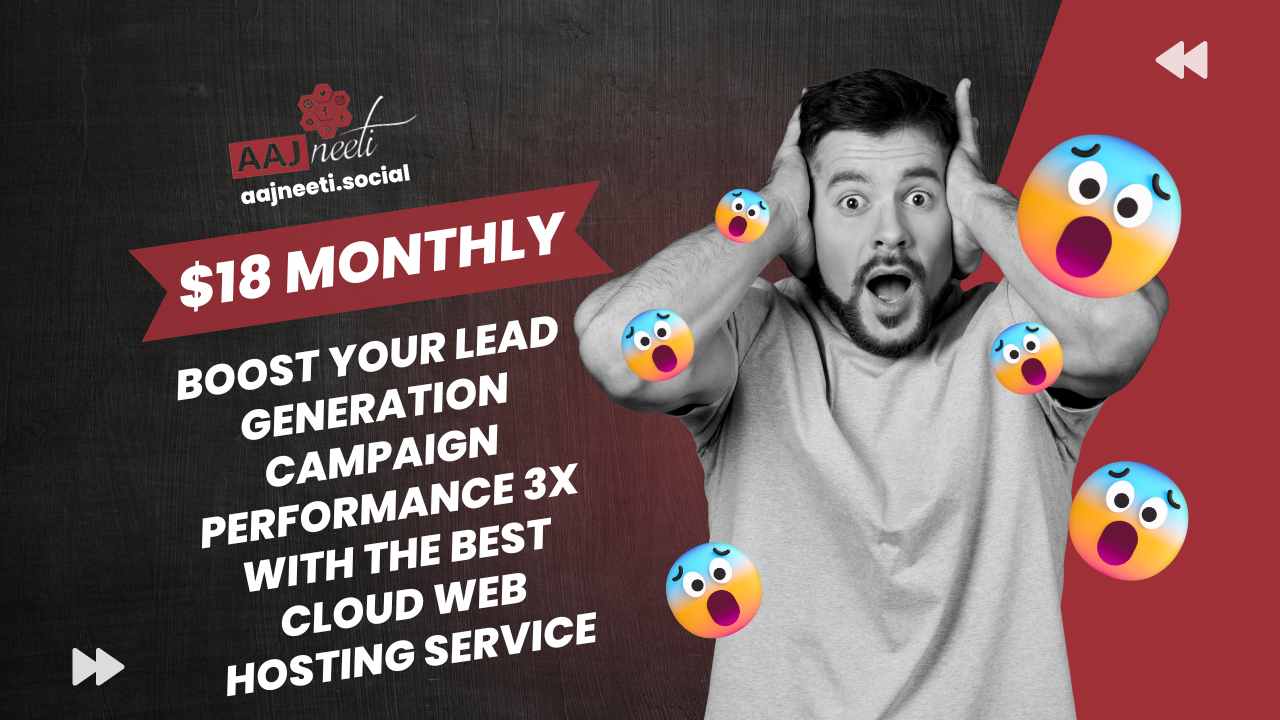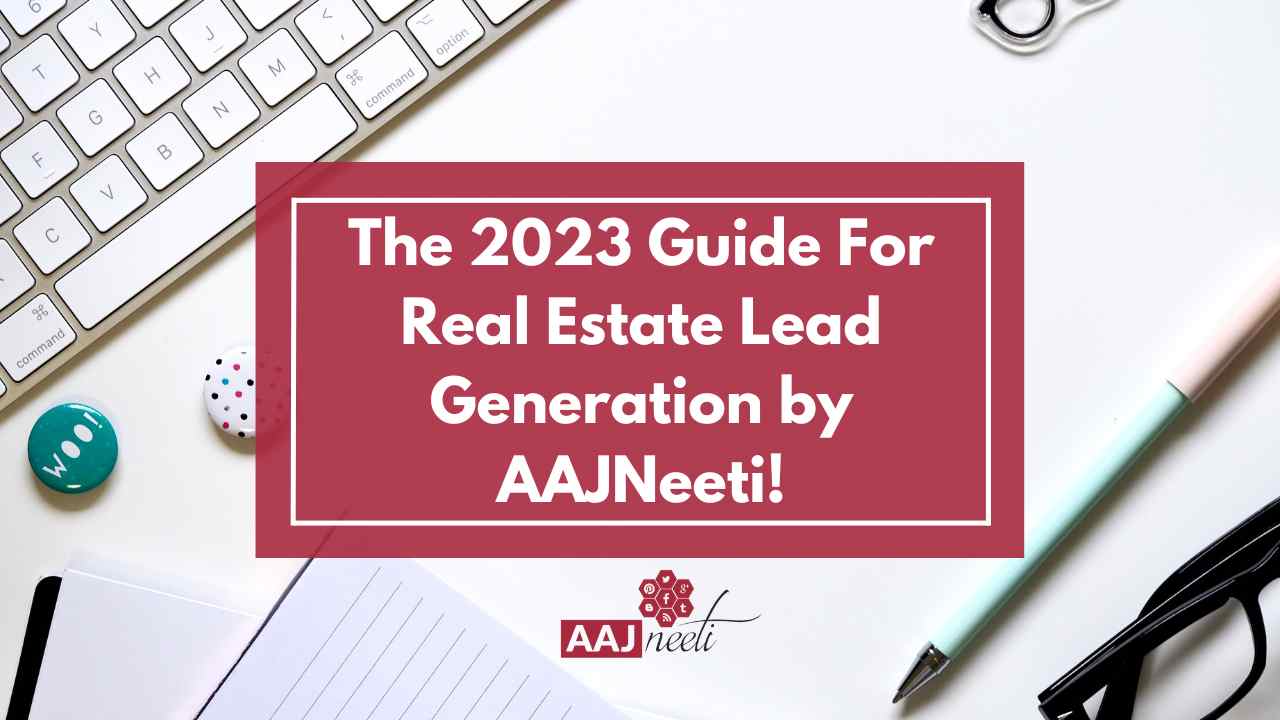A lead generation campaign is a process of capturing and stimulating interest in a service or product for developing leads. This includes a strategy using a particular media source and an offer to create some inbound leads. If you convince someone somewhere to give you their personal information in exchange for some perks in return. These perks include valuable content, information, research, free trial, product, or something else they might want or need. Lead generation is incredibly important for marketers and the brands or businesses they want to grow.
Increasing leads means increasing brand awareness and interest in your products and services. And also nurturing curious prospects through the marketing funnel and into your sales pipeline. If you do this well lead generation strategies create strong relationships with qualified leads who invest in your business sincerely.
Basic terms in a Lead generation campaign
Lead: A prospect that has some level of potential in becoming your client. The individual usually shows interest and provides his or her information to your business.
Qualified lead: A prospect that meets all of your business’ qualifications and criteria necessary to become a client.
Lead Generation: The initiation of consumer interest or inquiry into products or services of your business.
Nurturing: Some leads qualify at very early stages while others may take more time. Many of your leads will need nurturing through frequent communication until they are ready for someone to contact them.
Hard Offer: This is typically an offer for a product or service that usually requires the prospect to act immediately. Oftentimes these offers are only available for a few people or may have an expiration date.
Soft Order: This type of offer usually does not require an immediate response from the users. An example of a soft offer is an email newsletter subscription for everyone in your list.
Lead Capture: The use of marketing automation systems to allow marketers to gather contact information from multiple sources. These sources include landing pages, web forms, and email campaigns.
Landing Pages: A Landing page is a page that a visitor can arrive on in response to clicking a link.
Build your Lead generation campaign
Imagine for a moment you are at home when suddenly you receive a phone call from a local moving company. Earlier that day you filled out a form on the company’s website. You input your details like name, phone number, zip code, and services you were willing to provide. While on the website you also downloaded a guide on how to get ready for your next move. In doing so, this local company generated a new lead, which is you. With your information, they are now able to contact you with further valuable information.
This is how the lead generation process takes place. The process begins with several main vital components. These components are necessary in order to maximize the number of qualified leads that you receive. Below I have mentioned a few components:
Generating Leads through a successful plan
Now you understand the basic terms and having all of the components that make up an online Lead generation campaign. You can now start to develop your plan by going through the following steps. It is crucial to know that your process will vary depending on your objective, target audience, and use of media.
Setting your campaign objective
Your objective can vary depending upon the outcome that you want to achieve. You may want to start off by defining your goal by either the lead quantity or revenue per lead. These are just a few basic examples of what your campaign objective could possibly be. In order to better define your objective you may want to ask yourself some questions:
- Who will be your target audience?
- What do you want them to perform in return?
- How will you reach your target audience?
- What call to action do you want to offer them?
- What are you going to offer them?
- How and when will you follow-up?
- Who will follow-up and what will you do or what will you ask when you follow-up?
- How will you record and report on the results of the lead and what will you report these results to?
- When will you evaluate your lead generation efforts and what will you consider a success?
Determining your target audience
There is no use in generating leads if they are not going to turn into clients fit for an agency. You will need to start by doing some research to figure out who your targets are. Look at your current customers and audience. Interview your best clients to learn things like their background, goals, where they spend their time, etc. However, you do not have to stop right there. Once you have learned everything about your target prospects. Then you can mold your lead generation marketing campaign to best suit their preferences.
Setting up campaign goals
Every successful marketing campaign starts with goals and those too specific ones. To generate the most leads possible is not a goal. Use past performances as a benchmark to come up with a specific number of visits, leads, conversion rate, etc. You will want these to hit in a particular timetable. If you have not kept track, try figuring out what a lead is worth to your agency, then work backward. Determining the value of your average customer will help you determine how many you need to hit your sales goals.
Determining what offer will attract your ideal client
Do you remember when it was easy to give away free stuff online? Requests for eBooks, tip sheets, and white papers were plentiful, and generating leads was easier. So easy, in fact, that some marketers got lazy. They started doing lesser work to generate the same amount of leads, and it worked for a while. Then, prospects caught on, realizing that not every lead magnet was equal. As a result, they became more selective with what they claimed online. Today it is not enough to create a cookie-cutter offer. You need to be original and truly helpful to your prospects if you expect to get efficient results.
Evaluating and selecting your campaign target
This may come from your current list of contacts that you have. Or you may want to focus on an entirely new target group for your Lead generation campaign. Either way, make sure that you have identified who those groups are. You must know what its plan points and issues might be that your firm can answer with content.
Determining your media outlet
There are many different media outlets ranging from email marketing to eBooks and guides. However, firms generating more than 60% of their leads online are two times more profitable than their competitors. Therefore, choosing an email campaign or holding a webinar would be an example of a great strategy for lead generation.
Developing an offer
To reiterate, a lead is a prospective client who has peaked interests in your product or service. In order to identify these prospects in your contact list, you may want to send out an offer to them. This could be a free download to an eBook, guide, or a registration for a free webinar, etc. When the lead responds to your offer, you capture their information to pull them into your Lead generation campaign. There you will continue to nurture your leads until they are ready to close a deal.
There are several main mechanics for creating an attractive offer. First, you must create a smartly organized landing page where a prospect lands for a distinct purpose. Usually, an offer or a call to action prompts it where the prospect has to fill out a form. There are several different places where you can promote these offers. These include blogs, webpages, social media, email, etc.
Creating a communication strategy process
This includes what your follow up process is going to look like. Strategizing how you will respond to your leads, and what kinds of materials you will share. Also, who will contact them, and finally defining what your proposals will look like as well.
Looking at all the elements of a successful Lead generation campaign can really make your head spin a bit. So in conclusion make sure your campaign includes a clear understanding of your:
- Target marketing
- Multiple media channels to capture and narrow down your leads
- Compelling offers
- A strong strategy that tracks the performance
If you have all these then you are ready to begin.
Lead generation campaign Ideas
Now that you know the basics, let us see some Lead generation campaign ideas and examples. You will find a couple of strategies that you can experiment with for your own brand or business. When choosing what to use out of these you must take your industry, business model, and audience into account. You must find something that fits perfectly into your model. Drafting a Lead generation campaign strategy out of all these samples and ideas will yield the best results.
Building your post click landing page
Now you know exactly what you are going to offer your prospects. You now have to convince them it is worth downloading. This is where your post click landing page comes in. These persuasive, standalone pages, disconnected from your website via navigation links in the menu or footer, use special elements. These elements have got proof to boost the chances someone claims your offer. Here is what those elements are:
A benefit oriented headline
Headlines attract more attention than body copy on a written page. The father of modern advertising, David Ogilvy, found that just 8 out of 10 people will read a headline. While only 2 will read the body copy. Make sure the big, bold words at the top gives your prospects a reason to read the rest of it. It must clearly communicate the benefit of claiming your offer. If you can not explain what is in it for your audience immediately, they will not continue on.
Engaging media
From the moment we are born, humans began processing the world visually. That is why using images and videos in advertising is the most effective way to capture attention and convey information. Hero shots, infographics, explainer videos, and video testimonials all help your prospects understand the benefits of your offer.
Skimmable copy
In a letter sent more than 350 years ago, French Philosopher Blaise Pascal wrote a line. “I have made this letter longer than usual because I have not had time to make it shorter”. Today many post click landing pages should close with the same sentence as well. It takes a lot of time to make one word do the work of two.
And this is the time marketers do not take. Instead, they stuff their post click landing page with link form block text about their product. And its benefits without giving any thought to the reader’s situation. That is they are busy, and they are not reading for pleasure. They want to know why they should claim your offer in as little time as possible. Therefore, you should break up block text into small paragraphs, use bullet points, and keep the text to a minimum.
Social proof
Why should you tell people your offer is worth claiming when you can show them? Positive reviews, testimonials, authority badges, and case studies all do that by showcasing customers that trust your business.
A well designed form
To capture leads, your post click landing page will need to feature a form with a proper design. So what does that mean? For beginners, you will need to determine what kind of information you need from your prospects. Firstly, try coming up with the best case scenario. That means all the things you would have from a lead in an ideal world. Let us say you and your team have decided on a form definition. That includes name, email, work phone, company size, and annual revenue.
Next, figure out something which you could do without. Do you really need to know company size or just the annual revenue will do? Is work phone necessary, or just the email address suffices?
Less is more on forms
Remember, the lesser information you ask your prospects to submit, the more likely they are to convert. Try to get your form down to the minimum amount of fields you need. This way you can effectively follow up with your leads. Something else to consider is your own offer. It must have a significant value to your audience. This way you can ask them more to hand over in exchange for it.
If you have put together a short top sheet, then ten fields might be too big an ask for. On the other hand, let us say you have compiled an industry report filled with valuable insights from leading experts. Then your prospects might be totally fine with completing a ten field form. Once you have decided how many fields to use, make sure to design the form easier to fill out. Include proper labels above fields. Try not to use the inner labels which disappear once the user start typing in.
Using push notifications to reach website visitors
Web push notifications are a fairly new channel to reach those visitors who have not given you their email addresses. It gives you the chance to bring them back to your funnel. But what if you choose them as your Lead generation technique?
Opting in for push notifications is a much smaller commitment than providing email. You can generate tons of top of the funnel leads with push notifications seamlessly. You can easily bring back visitors by combining it with a lead generation landing page or pop up form. Later you can convert them to a subscriber and send them marketing emails.
Converting visitors to leads with on-site retargeting
It is one thing to use pop up forms for B2B lead generation. However, you can easily get it to the next level. One casual way you can collect contact information is to show pop-ups after recognizing the exit intent. Exit-intent is when visitors approach the close button on their browser. As soon as a visitor begins to do it, a pop up appears. You will have the chance to ask for the contact information by offering:
- A coupon
- A discount
- A free eBook
- An email course
- A one-to-one consultation
- A newsletter subscription
You can also show completely personalized messages based on your blog or visitor’s behavior. For example, let us say a person visits your pricing page and checks one of your features. It is good to offer a quick consultation, a relevant case study, or a course. Targeted offers will have insanely high conversion rates.
Automate cold mails and focus on things that matter
Email is a powerful lead generation tool that gets even better once you automate most of the revenue bringing conversations. Make sure you have fresh leads to work with is to automate your cold emails. If you write them manually, it still makes sense to do it as a campaign. You will learn infinitely more about how to adjust your outreach than doing it by hand.
Prospect.io is a nifty tool that allows you to find someone’s email address using their LinkedIn or professional website. It puts them in an automatic sequence. These usually consist of three to four emails and always halt whenever you receive a first response. So you can start working in those relationships and close all the deals. Automation does not end as you can integrate it further with your CRM, and many more other apps.
Offering valuable lead magnets and hooks
Lead magnets and hooks are info products. These are the most common methods of lead generation among the international B2B marketplace. Gated means that downloading these pieces of content requires an opt-in. Let us look at what kinds of lead magnets exist. Choose a couple from this list and make sure they fit your business model. Also whether it is the type of content your audience likes to consume.
All the upcoming examples and ideas can yield even better results if you use them as content upgrades. Let us say that you wrote a blog about email list growth. Offer a checklist with step-by-step instructions on how to grow and an email list as a content upgrade.
Create an email course to educate your leads
An email course can be an outstanding lead magnet. Teaching people highly specific and valuable knowledge is always a thing that allows people to opt in. These courses are that it does not require as much resource as you would need for a video course. Create a short email course that enlightens your audience on a topic related to your product step by step. Build a large capture landing page for this purpose. Collect the subscribers there and follow up with automated emails.
It is important to go with the best practices when you begin with. If you are setting up a B2B lead generation funnel that relies on a web page and email marketing. It is like designing your own product. You need to provide great user experience throughout the funnel. Landing page templates follow the best practices. So it is a good opportunity to use them instead of building one from scratch.
Writing an actionable checklist
Downloadable checklists are awesome because they are actionable, teach something that is highly specific and easily consumable. What possibly can you write a checklist about? Basically, everything you can divide into steps, such as:
- How to improve your Search Engine Optimization via Backlinking?
- Outsourcing your content to other agencies.
- How to do sales without actually selling?
- How to do gardening within the inner city?
- Items you need for a road trip across India.
Think about your own industry and the pain point of your audience. Then find five to six topics, write them down and create PDFs from these.
Delivering real value with your newsletter
Believe it or not but your newsletter can be a great lead generation tactic for you. But you have to pay attention to send relevant, interesting, and truly valuable content. Best newsletters’ value proposition is unique, entertaining, and does not say any boring message. These messages include everything that asks the audience to directly or indirectly subscribe.
Repurposing your presentations
Creating presentations is a type of content that is still great. And especially when it comes to SlideShare that is the biggest presentation sharing platform. You have two options for lead generation:
- Free option: You can upload your presentations to SlideShare for free and still get quality traffic to it. And you can easily add a link to the bio and the description. That link sends the traffic in question to a standalone landing page.
- Paid option: SlideShare supports the option to insert lead capture forms into your slide. As a result, you can add a gate to a part of your presentation that asks for contact information.
Taking advantages of Videos
Video marketing is a hot topic as it makes understanding easier, can be interesting, and funny. You can convert leads easily by asking for emails if someone wants to watch your whole video. Make your video stop before something interesting is about to happen. This can be just before you tell the viewer an easier solution to a problem you described before. People love finished stories and tend to do a lot of things like social sharing or subscribing. All this just in order to see the outcome of the video.
Also, you can generate leads with multiple lesson educational video courses. There you give the first lesson away and require an opt-in if people want access to the remaining lessons. A video is a good medium as it is quite engaging and also has a higher possibility to widely spread. However, you can save time if you can repurpose your existing content. Just pick a topic you already wrote about and tell more about it deeply.
Generating leads can be fun with quizzes
Using interactive quizzes for B2B lead generation is a fairly new lead generation technique. If you create engaging and fun quizzes, it will be a goldmine of leads for your business. People like to test their skills and marketers can easily take advantage of it. However, creating engaging questionnaires is challenging. You have to ask for the contact information at exactly the right time. Your quizzes should not be too easy but should not be too hard either.
Let your leads learn from the best
Perform a research and reach out to the professional your audience would love to listen to. It can be an industry expert, an opinion leader, or even some celebrity. Interviews are good because they can be a great incentive. It builds your trustworthiness and also it is very easy to advertise it on social media.
Create share worthy infographics
Good infographics require a lot of work from you:
- Generate data
- Identify patterns
- Outline key takeaways
- Visualize data in an understandable and simple way
They are great not just for generating leads but also to help you get some backlinks. Use an embed code so that large media outlets can easily republish your infographics on their own sites.
Show your audience how you helped others succeed
Let us say a website visitor asks you a question. “How can you help my business?” You would tell them about one of your customers and how his company used your product and the outcome. These case studies give your prospects ideas on how to use your service and assure them that it truly works.
Not only successes are important, but also you can also tell stories about failures. This way you can teach others what not to do in different situations.
Consultation: Helping your leads solve their challenges
You must offer consultation to your prospects and provide customized, personalized value and experience. Do not be too salesy though. It can easily frighten your prospects away. The marketing of this new era is more about solving difficulties by introducing an approach instead of hard selling.
Solve problems using Calculators
Calculators are great for generating leads. They solve your audience’s problems in an interactive way. Your audience just have to choose their parameters and your calculator gives them comparison between different scenarios.
Offer a buyer convertor product
These are low ticket offers that convert leads or visitors into quality customers. They only pay a few dollars but it fundamentally changes the relationship between you and your prospect.
Designing a Thank You page
In your lead generation marketing campaign, the page that appears after a visitor claims is your Thank You page. Its purpose is to do more than you can think. It does not simply says “Thanks for downloading”. Its goal should also be to continue the conversation with that new lead. So how can you do that?
Firstly, let them know where they will find their resource now that they have filled out your form. Will they download it right then and there or you will send it to their email address? Secondly, it should attempt to drive them to another resource they might find useful. You can offer a template to go with that “How to Create Buyer Personas” eBook. Then on your Thank You page is the destination where you lead the prospects.
Conclusion
Of course, we are only scratching the surface with these ideas. There are all sorts of different ways to generate leads, including some more tried and true methods. You could always host a webinar, offer a free eBook, run a Contest, buy advertisements and what more. Whatever you try, the most important thing to remember a fact in order to generate qualified leads. You need to offer up quality content.
You need to walk in your Customer shoes. This advice follows much of what we have talked about and the modern challenger sale mentality. Brands demonstrate a strong understanding of the customer’s business or life challenges. They try to deliver helpful content, and act as a consultant or coach. You must give those top of funnel leads something that will educate, entertain, inform , or inspire them. Very soon the results will overwhelm you with too many leads.















